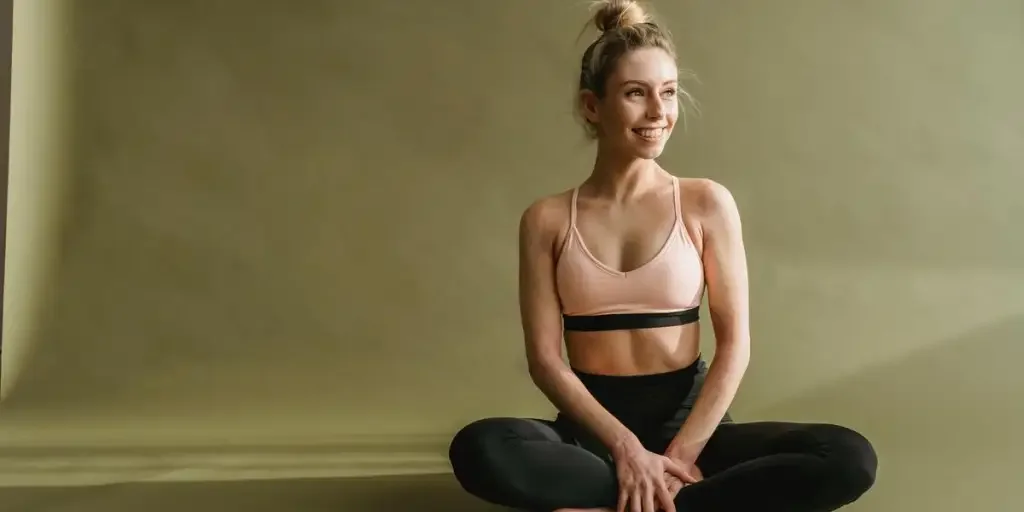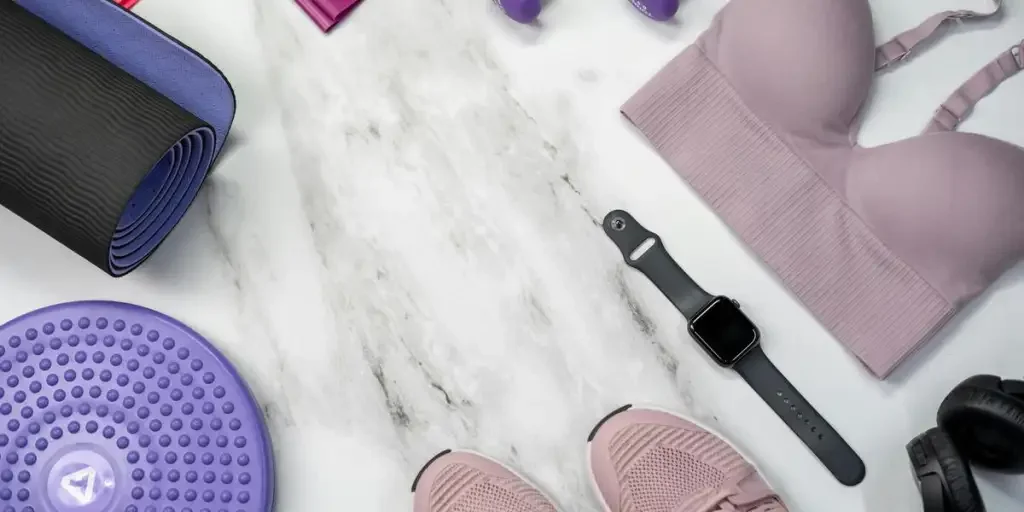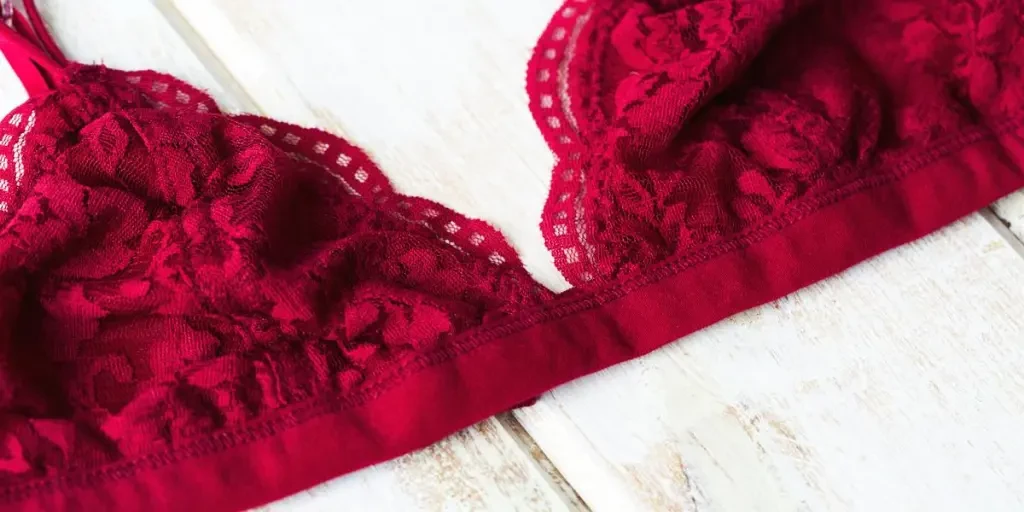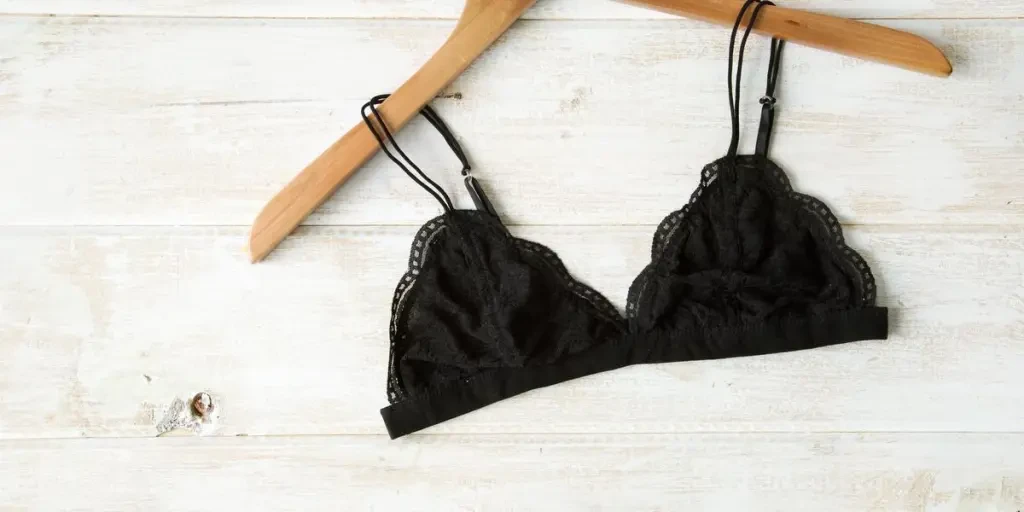Industri pakaian dalam tengah mengalami pergeseran signifikan ke arah bra tanpa bantalan, didorong oleh perubahan preferensi konsumen terhadap kenyamanan dan estetika alami. Tren ini membentuk kembali lanskap pasar, dengan meningkatnya permintaan dan penawaran inovatif dari para pemain utama.
Daftar Isi:
Tinjauan pasar
Meningkatnya Permintaan Bra Tanpa Bantalan
Pemain Pasar Utama dan Inovasi
Wawasan Pasar Regional
Bahan dan Kain: Tulang Punggung Kenyamanan
Kain Populer yang Digunakan pada Bra Tanpa Bantalan
Bahan Berkelanjutan dan Ramah Lingkungan
Desain dan Fungsionalitas: Memenuhi Berbagai Kebutuhan
Berbagai Potongan dan Gaya
Fitur Fungsional Meningkatkan Kenyamanan dan Dukungan
Ukuran dan Kesesuaian: Cocok untuk Semua Tipe Tubuh
Pentingnya Ukuran yang Akurat
Fitur Kustomisasi dan Dapat Disesuaikan
Pengaruh Budaya dan Warisan: Membentuk Preferensi
Evolusi Historis Bra Tanpa Bantalan
Tren Budaya yang Mempengaruhi Pilihan Desain
Kesimpulan
Tinjauan pasar

Meningkatnya Permintaan Bra Tanpa Bantalan
Permintaan bra tanpa bantalan meningkat, mencerminkan pergeseran yang lebih luas ke arah kenyamanan dan bentuk tubuh yang alami. Menurut laporan Research and Markets, pasar bra global diperkirakan tumbuh sebesar USD 19,044.13 juta selama tahun 2023-2028, dengan CAGR sebesar 7.78%. Pertumbuhan ini sebagian didorong oleh meningkatnya popularitas bra tanpa bantalan, yang menawarkan tampilan dan nuansa yang lebih alami dibandingkan dengan bra yang berbantalan.
Beberapa faktor berkontribusi terhadap permintaan yang terus meningkat ini. Pertama, ada peningkatan kesadaran di kalangan konsumen tentang pentingnya kenyamanan dan kesesuaian dalam mengenakan pakaian dalam. Bra tanpa bantalan, dengan desainnya yang ringan dan menyerap keringat, memenuhi kebutuhan ini secara efektif. Selain itu, tren menuju sikap positif terhadap tubuh dan penerimaan diri mendorong wanita untuk menerima bentuk tubuh alami mereka, yang selanjutnya meningkatkan daya tarik bra tanpa bantalan.
Pemain Pasar Utama dan Inovasi
Segmen bra tanpa bantalan tengah mengalami inovasi dan persaingan yang signifikan di antara para pelaku pasar utama. Merek-merek terkemuka seperti Victoria's Secret, Chantelle, dan Wacoal terus memperkenalkan desain dan teknologi baru untuk meningkatkan kenyamanan dan dukungan. Misalnya, Victoria's Secret telah meluncurkan serangkaian bra tanpa bantalan dengan kain inovatif yang memberikan kesesuaian tanpa jahitan dan kenyamanan yang unggul.
Menurut WGSN, bra tanpa lapisan mengungguli model yang dilapisi di Inggris dan AS, dengan tingkat kehabisan stok dengan harga penuh (FPOOS) yang lebih tinggi dan tingkat penurunan harga yang lebih rendah. Hal ini menunjukkan preferensi konsumen yang kuat dan kesediaan untuk membayar lebih untuk pilihan yang tidak dilapisi. Merek juga berfokus pada keberlanjutan, dengan banyak memperkenalkan bahan dan proses produksi yang ramah lingkungan. Misalnya, Calida telah mengembangkan kemasan pakaian tidur yang 100% didaur ulang, yang dapat digunakan untuk mencuci, berbelanja, atau bepergian.
Wawasan Pasar Regional
Permintaan bra tanpa bantalan bervariasi di berbagai wilayah, dipengaruhi oleh preferensi budaya dan dinamika pasar. Di Amerika Utara, tren ini didorong oleh meningkatnya penekanan pada kenyamanan dan kesehatan. AS dan Kanada mengalami lonjakan permintaan bra tanpa bantalan, terutama di kalangan konsumen muda yang mengutamakan kenyamanan daripada estetika tradisional.
Di Eropa, pasar ditandai dengan preferensi kuat untuk desain alami dan minimalis. Negara-negara seperti Inggris, Prancis, dan Jerman memimpin tren ini, dengan konsumen semakin memilih bra tanpa bantalan yang menawarkan siluet alami. Menurut WGSN, lingerie berenda, termasuk bra tanpa bantalan, laku keras di Inggris dan AS, sejalan dengan tren #PrettyFeminine.
Kawasan Asia-Pasifik juga mengalami pertumbuhan di pasar bra tanpa bantalan, didorong oleh meningkatnya pendapatan yang dapat dibelanjakan dan perubahan tren mode. Negara-negara seperti Tiongkok, Jepang, dan India mengalami peningkatan permintaan untuk bra tanpa bantalan, karena konsumen menjadi lebih sadar akan manfaat kenyamanan dan kesesuaian. Industri e-commerce yang berkembang di kawasan ini semakin memudahkan akses ke berbagai pilihan bra tanpa bantalan.
Bahan dan Kain: Tulang Punggung Kenyamanan

Kain Populer yang Digunakan pada Bra Tanpa Bantalan
Pemilihan bahan sangat penting dalam desain dan fungsi bra tanpa bantalan. Bahan yang paling populer meliputi katun, renda, sutra, dan serat mikro. Katun disukai karena sifatnya yang menyerap keringat dan lembut, sehingga ideal untuk dikenakan sehari-hari. Di sisi lain, renda sering digunakan karena daya tarik estetikanya dan teksturnya yang halus, sehingga memberikan sentuhan keanggunan dan kewanitaan pada bra. Sutra adalah pilihan mewah lainnya, yang dikenal karena teksturnya yang halus dan kilau alaminya, sehingga memberikan pengalaman yang nyaman dan bergaya. Serat mikro, kain sintetis, disukai karena sifatnya yang ringan dan menyerap kelembapan, sehingga cocok untuk dikenakan saat beraktivitas.
Menurut laporan profesional, merek seperti Mey dan Ajour berinvestasi pada kain berkualitas tinggi untuk meningkatkan daya tahan dan kenyamanan bra tanpa bantalan. Merek-merek ini berfokus pada detail dan konstruksi yang rumit untuk memastikan kesesuaian yang sempurna dan kesan mewah. Penggunaan renda dan kain tipis yang sangat halus, seperti yang terlihat pada prakiraan S/S 25, menyoroti tren desain yang halus dan anggun yang membelai tubuh.
Bahan Berkelanjutan dan Ramah Lingkungan
Keberlanjutan menjadi faktor penting dalam industri pakaian, dan bra tanpa bantalan tidak terkecuali. Merek-merek semakin beralih ke bahan-bahan yang ramah lingkungan seperti katun organik, bambu, dan kain daur ulang. Katun organik ditanam tanpa pestisida dan bahan kimia berbahaya, menjadikannya pilihan yang lebih sehat bagi lingkungan dan pemakainya. Kain bambu adalah pilihan berkelanjutan lainnya, yang dikenal karena kelembutannya, daya serapnya, dan sifat antibakterinya. Kain daur ulang, yang terbuat dari limbah pascakonsumen, membantu mengurangi dampak lingkungan dengan meminimalkan limbah dan menghemat sumber daya.
Dilaporkan oleh Curve New York, merek seperti Harper Wilde dan Understance memimpin dalam memasukkan bahan berkelanjutan ke dalam koleksi mereka. Harper Wilde, misalnya, menggunakan kain daur ulang pada bra mereka, sementara Understance berfokus pada pembuatan opsi ramah lingkungan dengan aliran udara panel belakang untuk menambah kenyamanan. Inisiatif ini mencerminkan permintaan konsumen yang terus meningkat akan pakaian dalam yang berkelanjutan dan diproduksi secara etis.
Desain dan Fungsionalitas: Memenuhi Berbagai Kebutuhan

Berbagai Potongan dan Gaya
Bra tanpa bantalan tersedia dalam berbagai potongan dan gaya untuk memenuhi berbagai preferensi dan tipe tubuh. Beberapa gaya yang populer meliputi bralette, bra balconette, dan bra olahraga. Bralette dikenal karena desainnya yang ringan dan tanpa kawat, sehingga memberikan kenyamanan dan kelonggaran. Bra balconette, dengan tali pengikat yang lebar dan cup berpotongan rendah, memberikan kesan yang menarik dan ideal untuk dikenakan di bawah pakaian berleher rendah. Bra olahraga, yang dirancang untuk aktivitas berdampak tinggi, menawarkan dukungan dan kenyamanan maksimal dengan fitur-fitur seperti tali pengikat yang lebar dan kain yang menyerap keringat.
Menurut laporan Curve New York, merek-merek juga bereksperimen dengan desain inovatif untuk meningkatkan fungsionalitas. Misalnya, merek Kanada Understance telah merancang bra kompresi untuk mengikat dengan aliran udara panel belakang, yang memenuhi kebutuhan individu yang mencari dukungan dan kenyamanan tambahan. Demikian pula, bralette reversibel Bra Bar menawarkan tampilan dua-dalam-satu yang serbaguna, menjadikannya pilihan populer di kalangan remaja.
Fitur Fungsional Meningkatkan Kenyamanan dan Dukungan
Fitur fungsional memainkan peran penting dalam meningkatkan kenyamanan dan dukungan bra tanpa bantalan. Tali yang dapat disesuaikan, pita lebar, dan desain tanpa jahitan adalah beberapa elemen utama yang berkontribusi pada kesesuaian yang lebih baik dan kenyamanan secara keseluruhan. Tali yang dapat disesuaikan memungkinkan kesesuaian yang disesuaikan, memastikan bahwa bra tetap pada tempatnya tanpa menekan bahu. Pita lebar memberikan dukungan tambahan dan membantu mendistribusikan berat secara merata, mengurangi tekanan pada punggung dan bahu. Desain tanpa jahitan, dibuat dengan kain yang halus dan elastis, menawarkan tampilan yang ramping dan tidak terlihat di balik pakaian, mencegah ketidaknyamanan atau iritasi.
Merek seperti Anita dan Magnetic Me menggabungkan fitur inovatif untuk meningkatkan aksesibilitas dan inklusivitas. Bra pascaoperasi Anita dilengkapi tali Velcro dan ritsleting depan, sehingga lebih mudah dikenakan dan dilepas. Pakaian tidur Magnetic Me dilengkapi penutup magnetik, yang membantu konsumen yang menderita radang sendi dan disabilitas lainnya. Desain yang cermat ini mencerminkan komitmen industri untuk memenuhi berbagai kebutuhan dan meningkatkan pengalaman pengguna secara keseluruhan.
Ukuran dan Kesesuaian: Cocok untuk Semua Tipe Tubuh

Pentingnya Ukuran yang Akurat
Ukuran yang akurat sangat penting untuk memastikan kenyamanan dan dukungan bra tanpa bantalan. Bra yang tidak pas dapat menyebabkan ketidaknyamanan, nyeri, dan bahkan masalah kesehatan jangka panjang. Oleh karena itu, penting untuk mendapatkan ukuran yang tepat dan memilih ukuran yang benar. Banyak merek menawarkan berbagai ukuran untuk memenuhi berbagai tipe tubuh, memastikan bahwa setiap orang dapat menemukan bra yang pas.
Berinvestasi dalam konstruksi dan pengembangan kecocokan adalah kunci untuk mempertahankan berbagai ukuran dan memastikan kecocokan yang sempurna. Merek seperti Mey dan Ajour berfokus pada pengembangan kecocokan untuk memberikan pengalaman yang nyaman dan mendukung bagi pelanggan mereka. Ini termasuk menggunakan kain berkualitas tinggi, detail yang rumit, dan teknik konstruksi canggih untuk menciptakan bra yang pas dan terasa mewah.
Fitur Kustomisasi dan Dapat Disesuaikan
Fitur kustomisasi dan penyesuaian menjadi semakin populer di industri pakaian dalam. Fitur-fitur ini memungkinkan setiap orang untuk mempersonalisasi bra mereka agar lebih pas dan lebih nyaman. Tali yang dapat disesuaikan, penutup kait dan mata, dan bantalan yang dapat dilepas adalah beberapa opsi kustomisasi umum yang tersedia. Fitur-fitur ini memungkinkan pemakai untuk menyesuaikan ukuran bra sesuai dengan preferensi dan kebutuhan mereka, memastikan kenyamanan dan dukungan maksimal.
Merek seperti Harper Wilde menggabungkan fitur inovatif untuk meningkatkan pengalaman kustomisasi. Bra Harper Wilde dilengkapi dengan garis waktu timbul pada kait bra, yang merekomendasikan tempat untuk mengencangkannya saat bra melar dan dikenakan. Desain yang cermat ini membantu individu mendapatkan ukuran yang pas dari waktu ke waktu, memastikan kenyamanan dan dukungan yang tahan lama.
Pengaruh Budaya dan Warisan: Membentuk Preferensi

Evolusi Historis Bra Tanpa Bantalan
Evolusi bra tanpa bantalan berakar kuat dalam konteks budaya dan sejarah. Dari korset dan bra awal hingga bralette dan bra olahraga masa kini, desain dan fungsi bra tanpa bantalan telah mengalami transformasi yang signifikan. Pergeseran dari bra yang sangat terstruktur dan berbantalan ke pilihan yang lebih alami dan nyaman mencerminkan perubahan sikap masyarakat terhadap citra tubuh dan kenyamanan.
Menurut catatan sejarah, diperkenalkannya bra tanpa bantalan pada awal abad ke-20 menandai pergeseran signifikan ke arah pakaian dalam yang lebih alami dan nyaman. Evolusi ini berlanjut selama beberapa dekade, dengan munculnya gerakan feminis pada tahun 1960-an dan 1970-an yang semakin mempromosikan gagasan tentang keindahan dan kenyamanan alami. Saat ini, bra tanpa bantalan dipuji karena kemampuannya memberikan dukungan dan kenyamanan tanpa mengorbankan gaya dan estetika.
Tren Budaya yang Mempengaruhi Pilihan Desain
Tren budaya memainkan peran penting dalam membentuk pilihan desain bra tanpa bantalan. Pengaruh mode, media, dan norma sosial dapat dilihat dari gaya dan fitur bra yang terus berkembang. Misalnya, semakin populernya gerakan athleisure dan body positivity telah menyebabkan meningkatnya permintaan akan bra yang nyaman dan suportif yang sesuai dengan beragam tipe tubuh dan gaya hidup.
Dilaporkan oleh Curve New York, tren renda bertato yang rumit dan desain bordir mencerminkan pengaruh estetika budaya pada pakaian dalam. Merek-merek menggunakan renda ultra-halus dan kain tipis untuk menciptakan pola-pola halus yang membelai tubuh, yang dikaitkan dengan tema-tema seperti #RefinedFetish dan #DarkRomance. Tren budaya ini menyoroti pentingnya estetika dan individualitas dalam desain bra tanpa bantalan, yang memenuhi beragam preferensi konsumen modern.
Kesimpulan
Pasar bra tanpa bantalan terus berkembang, didorong oleh kemajuan dalam bahan, desain, dan pengaruh budaya. Merek-merek berfokus pada kain berkualitas tinggi, bahan yang berkelanjutan, dan fitur-fitur inovatif untuk meningkatkan kenyamanan dan dukungan. Pentingnya ukuran yang akurat dan pilihan penyesuaian memastikan bahwa setiap individu dapat menemukan bra yang pas. Seiring tren budaya terus membentuk pilihan desain, masa depan bra tanpa bantalan tampak menjanjikan, dengan fokus pada inklusivitas, keberlanjutan, dan individualitas. Evolusi dinamis ini mencerminkan komitmen industri untuk memenuhi beragam kebutuhan dan preferensi konsumen modern.





 Afrikaans
Afrikaans አማርኛ
አማርኛ العربية
العربية বাংলা
বাংলা Nederlands
Nederlands English
English Français
Français Deutsch
Deutsch हिन्दी
हिन्दी Bahasa Indonesia
Bahasa Indonesia Italiano
Italiano 日本語
日本語 한국어
한국어 Bahasa Melayu
Bahasa Melayu മലയാളം
മലയാളം پښتو
پښتو فارسی
فارسی Polski
Polski Português
Português Русский
Русский Español
Español Kiswahili
Kiswahili ไทย
ไทย Türkçe
Türkçe اردو
اردو Tiếng Việt
Tiếng Việt isiXhosa
isiXhosa Zulu
Zulu